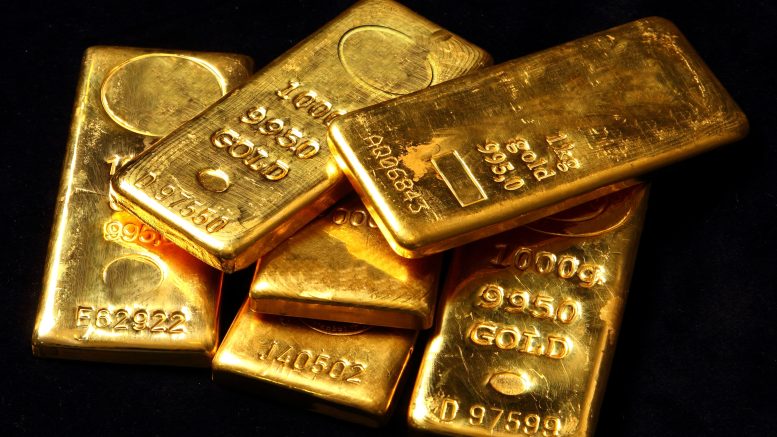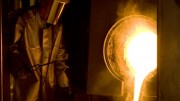Amid the frenzied analyses of supply, demand and spiking prices for green metals and critical minerals, another metal may be preparing to steal the spotlight: gold.
While the price of gold spiked earlier this year to US$2,068 per oz. (just shy of its August 2020 all-time high) on Russia’s invasion of Ukraine, it hasn’t stayed at those elevated levels. At press time, the yellow metal was at a relatively modest US$1,850 per oz., just a touch above where it began the year at US$1,827.50 per oz.
However, persistent inflation, rising recession risks, pandemic-stressed supply chains, the ongoing war in Ukraine (now entering 14 weeks), and Covid-19 shutdowns in China are all contributing to extreme market volatility. That should have more investors turning to safe haven gold, which saw a 34% surge in demand in the first quarter compared with the same period of 2021, according to World Gold Council figures.
In its annual “In Gold We Trust” report, released on May 24, Liechtenstein-based investment firm Incrementum AG highlights many of these risks facing investors and more, but its primary theme is denoted by its subtitle, “Stagflation 2.0.” The 392-page tome warns of the rising risk of stagflation, and notes that gold, silver and mining stocks have historically outperformed in stagflationary times — marked by a painful combination of high inflation, stagnant growth or economic contraction, and high unemployment.
The last time the world saw a significant period of stagflation was in the 1970s and early 1980s.
Gold does well during stagflationary periods, as noted in a March blog post by World Gold Council analysts Johan Palmberg (senior quantitative analyst) and Krishan Gopaul (senior analyst, Europe, Middle East and Africa).
“Of the four business cycle phases since 1973, stagflation is the one that is most supportive for gold and conversely the worst for risk assets,” write Palmberg and Gopaul. In their analysis of annualized average adjusted returns for several asset classes during stagflationary, deflationary, reflationary and “goldilocks” periods from 1973 to mid-2021, gold priced in U.S. dollars performed the best during stagflationary periods, returning 32.2%. The next best-performing asset during these periods was the S&P GSCI (commodities) Index, returning 17%, and U.S. corporate bonds at 6.1%, with the worst performance by EAFE (Europe, Australasia and Far/Middle East) equities at -11.6%.
The analysts note that the environment is still “reflationary” rather than stagflationary, and that the risk of stagflation is highest in Europe.
While economists — including at the Conference Board of Canada — do point to a rising risk of stagflation, they generally believe it will be a milder version of what occurred in the 1970s. (One big difference is an unemployment rate at a record low of 5.2% in April in Canada and near record lows in the U.S.)
Incrementum projects a long-term gold price of around US$4,800 per oz. by 2030, despite rising interest and a strong U.S. dollar. But even if gold continues to rise, an inflationary or stagflationary environment is challenging for any business, including gold mining. Headwinds facing gold miners include: rising operating costs eating away at their margins; rising capital costs that are rendering feasibility study estimates completed only a year ago hopelessly out of date; jurisdictional risk and rising resource nationalism in much of the world, and global permitting issues and delays.
Incrementum’s analysts recommend royalty and streaming companies as a way for investors to have their cake (exposure to strong gold prices) and eat it too (protection from rising costs).
And although gold is not a critical or battery metal, the report does lay out how gold investing can fit into a climate friendly portfolio. Incrementum notes that gold miners have an advantage over miners of other metals in terms of carbon emissions.
“Scope 3 emissions from gold mining companies are almost nonexistent, because their product, gold bars, will undergo very little transformation, mostly through jewelry making and minting. Also, and counterintuitively, gold has extremely low Scope 1 and 2 CO2 emissions per ounce of gold produced for such large operations.”
This year’s “In Gold We Trust” report also calls for the creation of a new economic metric — all-in emissions costs (AIEC) — that will help investors measure climate impact of gold production, translating non-financial into financial, actionable costs.
The formula for AIEC, as proposed by Incrementum, would be Scope 1 plus Scope 2 emissions multiplied by the projected regional carbon credit price, and divided by the total number of ounces produced, and would be a standalone metric apart from all-in sustaining costs. The investment firm believes the metric will be widely adopted by gold miners “in short order.”
“This will become one of the most important metrics for new gold mining project financing, as it indicates long-term capital exposure and allows investors to easily translate CO2 emissions into U.S. dollars and incorporate the result into their financial models,” the report says. “AIEC will also allow investors to understand their current exposure and move capital according to the actual costs of emissions rather than solely on the basis of generic ESG scores regarding emissions.”




Be the first to comment on "Gold price may be set to rise – but so are risks for miners"